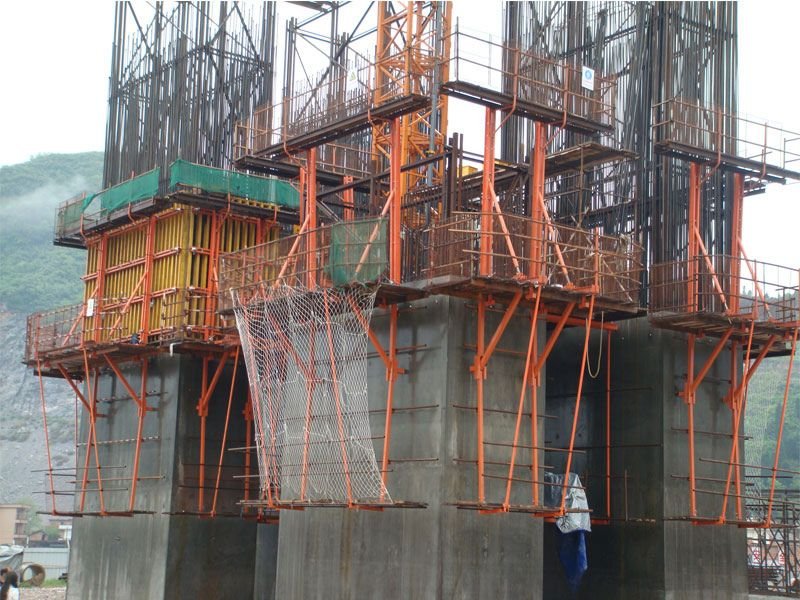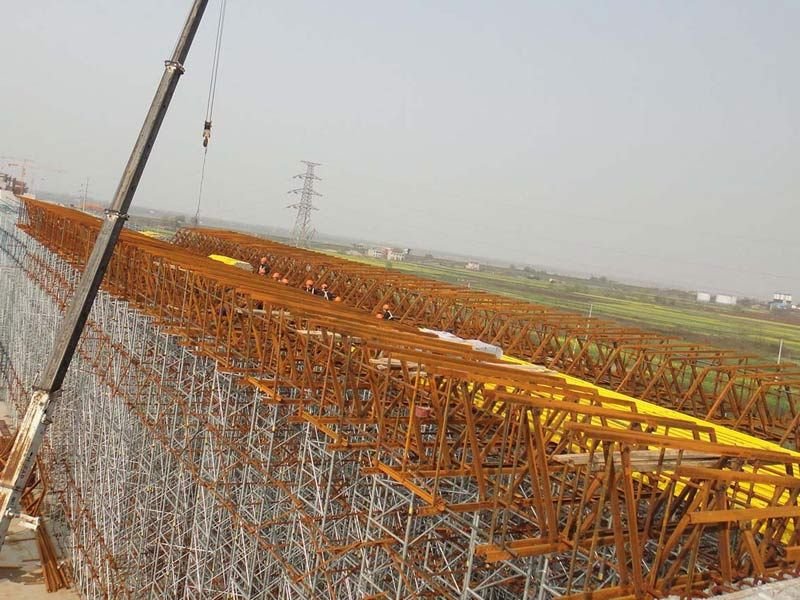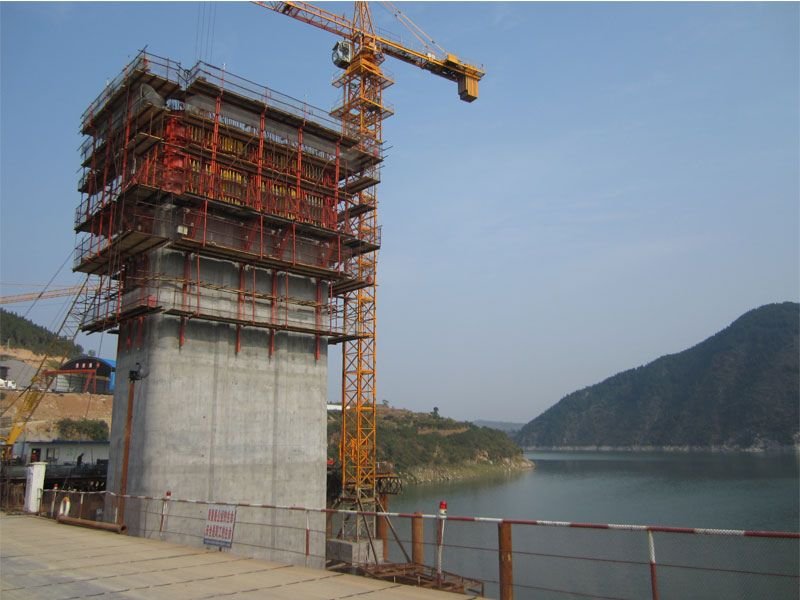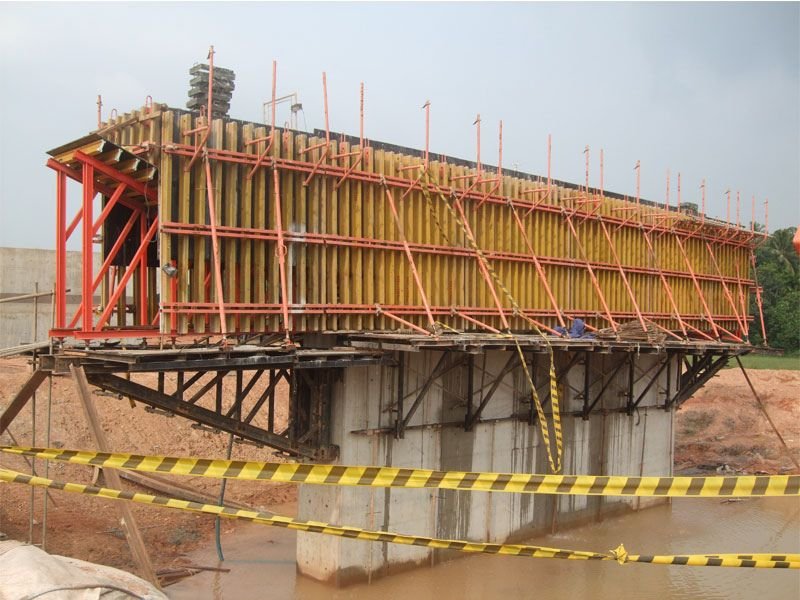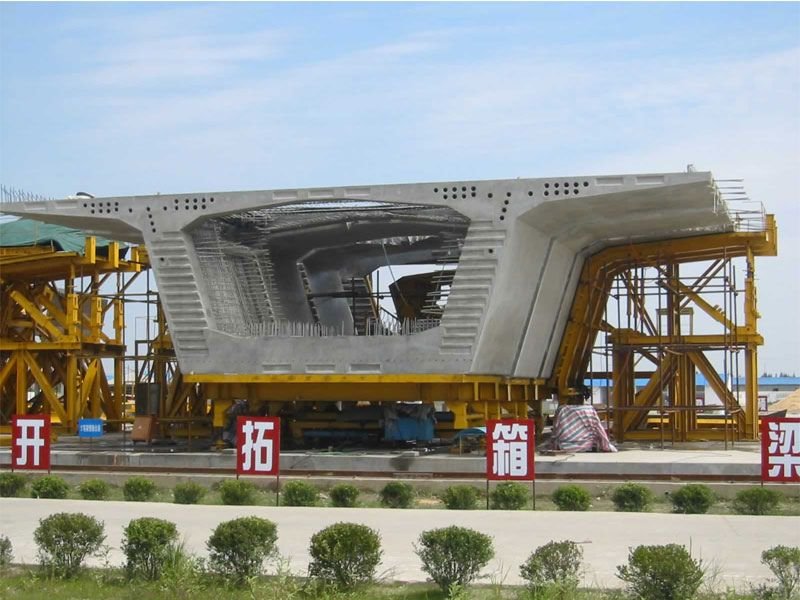To build a bridge is to forge a connection between knowledge and experience. At TECON, our unwavering dedication lies in advancing formwork technology, solidifying our position as industry leaders. This pursuit drives us to continually innovate in the realm of bridge formwork, amplifying construction efficiency through systematic implementation.
TECON’s bridge formwork solutions are comprehensive packages that bestow tangible advantages and added value upon our esteemed clientele. With a resolute focus on our clients’ needs, we not only construct bridges but also bridge the gap to their aspirations.
Advantages of TECON Bridge Formwork
- Our automated climbing formwork effortlessly accommodates diverse variations in pier and pylon designs, surmounting challenges of geometry, height, and dimensions.
- We ensure cost-effective and punctual delivery of optimally engineered shoring scaffolds, facilitating secure and economical transfer of substantial loads from the bridge’s upper structure.
- TECON’s integrated system is the epitome of cost-effectiveness, ensuring swift equipment availability.
- Years of partnership with premier beam equipment suppliers enhance bespoke planning and pre-assembly of high-performance molding systems, streamlining construction timelines seamlessly.
Economical Bridge Formwork Solutions
Upon receiving the structural blueprints of your bridge venture—whether involving piers, pylons, or box girders—our proficient team promptly tailors formwork and scaffolding solutions, steeped in cost-saving principles.
Bridge Shuttering Materials
Bridge shuttering materials encompass the provisional formwork or molds instrumental in shaping and sizing bridge components during construction. Typically hewn from wood, steel, or other enduring materials, these molds bear the weight of liquid concrete until it solidifies.
The choice of shuttering material hinges on factors like component size, shape, design intricacy, and final surface finish. Prominent shuttering materials include timber, plywood, steel, and precast concrete.
Beyond structural support, shuttering material influences the ultimate texture and appearance of bridge elements. Upon concrete setting, removal of the shuttering material unveils the finished product. Meticulous selection and installation of shuttering material underpin the structural robustness and visual allure of the final bridge.
Bridge Formwork Blueprinting
Devising bridge formwork entails crafting a provisional framework that upholds the weight of wet concrete while the bridge deck takes form. This formwork defines the deck’s contours and enables the incorporation of reinforcement steel.
Prudent bridge formwork design weaves a tapestry of factors, encompassing deck dimensions, supporting structure load capacities, and specifications for concrete placement and finishing. Safety considerations—such as fall protection and worker access—are integral to the blueprint.
Materials employed in formwork hinge on specific design requisites and may encompass steel, aluminum, or wood. The formwork must withstand the weight of wet concrete and any additional loads that construction might impose.
Bridge formwork design is an intricate dance, choreographed by adept engineers and construction professionals. Their concerted efforts ensure formwork safety, efficacy, and alignment with design benchmarks.
